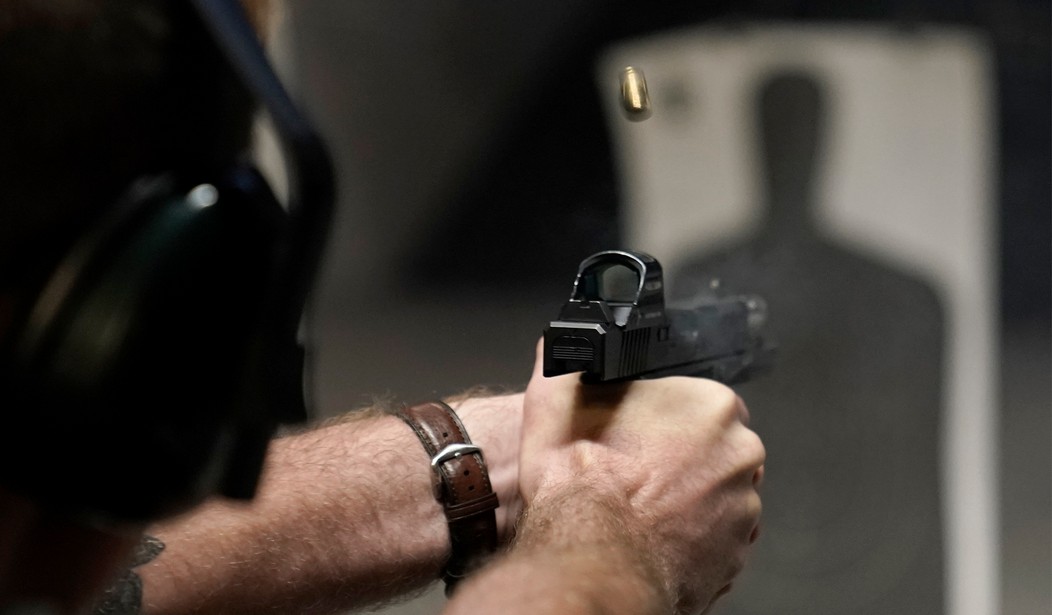I’ve been pecking away at this series on the New York SAFE Act., for about two years, with a particular focus on the Mental Health Hygiene Law. I’ve spoken with several people who have been negatively, and wrongfully, affected by these provisions in the law, and have only scratched the surface on this topic. I invite you to read the prior parts, if you’re interested, and there will be links to them at the bottom of this piece. Part 1 involved one of the victims of the SAFE Act., Sandra “Sandy” Richardson, and she’s become a complete warrior in unraveling the unconstitutional policies in New York. Richardson was recently in an email string with the state and she invited me to share what she’s uncovered.
A quick recap on Richardson is that she ended up having a report filed against her via Mental Hygiene Law. 9.01. The report was not only fabricated, but was filed when Richardson sought voluntary mental health help. We’re told that we’re not supposed to be ashamed to admit if we
need some help and that’s a perfectly normal thing to find solace in therapies out there. Yet, people get punished for doing so.
When Richardson came out the other side of a voluntary situation, she ended up having her NY State firearms licenses revoked and had to turn over her firearms. The MHL 9.01 report will add people to the national NICS disqualified list. In many instances, the people don’t even know they’re on the list, not unless they actually have a N.Y. State pistol permit.
Richardson was able to fight to reclaim her rights, but many have not been able to be repatriated with their Second Amendment right to keep and bear arms. For those people and future victims of New York’s draconian law, she’s continued to fight.
During her research, she recently was emailing with the Office of Mental Health of N.Y., and then eventually the Office of NICS Appeals. The thread is rather long.
Sent: Sunday, January 7, 2024 9:57 AM
Message to [email protected]
Name: Sandra Richardson
E-mail Address: REDACTED
Message: Hello,
Does NYS OMH report all MHL 9.39 observation stays to NICS? If not, what are the specific internal criteria and process steps that OMH uses in deciding to make a NICS report. In other words, how does OMH decide to report to NICS?
What are the internal OMH policies and steps for reviewing and granting a certificate of relief. I am looking for more detailed information than is on the public website. Do not tell me to contact the Office of NICS Appeals and SAFE Act because I am not in NICS
and so do not need to file a COR application. I simply want to understand the details on OMH internal processes related to NICS reporting.
Thank you,
Sandra Richardson
#
On Mon, Jan 8, 2024 at 12:18 PM
Thank you for contacting the New York State Office of Mental Health Customer Relations. Your inquiry would best be directed to the Office of NICS Appeals and Safe Act, as they can answer any questions regarding reporting requirements for NYS agencies. Their contact information can be found at: https://nics.ny.gov/contact-us .
Customer Relations
Office of Quality Improvement
Office of Mental Health
44 Holland Ave, Albany, NY 12229
1-800-597-8481
www.omh.ny.gov
#
Richardson kept on top of the Office of Mental Health with two follow-ups to her first request. She’s been playing correspondence and phone tag with these departments for years now, and wanted to get the Office of Mental Health on the record. After her subsequent requests, she got a response from The Office of NICS Appeals And SAFE Act, emphasis added.
On Fri, Jan 19, 2024, 7:30 PM:
Hello Sandra Richardson,
Here are the answers to your questions:
Your Questions: Does NYS OMH report all MHL 9.39 observation stays to NICS? If not, what are the specific internal criteria and process steps that OMH uses in deciding to make a NICS report. In other words, how does OMH decide to report to NICS?
Answer: An involuntary commitment pursuant to MHL 9.39 is reportable to NICS once a single Emergency Department (“ED”) physician certifies (i.e. signs) the 9.39 legal status paperwork [this is the 9.39 form that needs to be completed and certified by the ED physician] following the doctor’s independent psychiatric evaluation of the patient. The date the doctor completed the certification is the admission date that is reportable to NICS. Additionally, the single ED physician must certify the 9.39 legal status paperwork
within the first 48 hours of the emergency admission to be considered an MHL 9.39 involuntary admission. The patient must also be 16 years of age or older to qualify as reportable. Reporting is not dependent on the physical location of the patient within the hospital or the length of stay.
Answer: There are other applicable involuntary admissions which are governed by certain federal and state statutes. That is, any admission to a psychiatric hospital in NYS made pursuant to the following statutes has the legal status of “committed to a mental institution” or “adjudicated as a mental defective,” as defined by federal and state law pursuant to Brady Act 18 U.S.C. §§ 922(d)(4) and (g)(4) and 14 NYCRR Part 543, and therefore is reported to NICS under federal and state law: MHL §9.13(b), §9.27, §9.33, §9.37, §9.39 & Article 10; Criminal Procedure Law §730 Temporary Order of Observation, Order of Commitment and Order of Retention; §330.20 Order of Commitment, Order of Retention, Recommitment, Transfer Order, Temporary Confinement Order, and admissions pursuant to Corrections Law §402 and §508.
Reporting is dependent on completed qualifying involuntary legal status paperwork and patient age (i.e. a patient aged 16 or older). If involuntary legal status forms are incomplete they do not meet NICS qualifying criteria, and thus, are not reportable. Likewise, voluntary admissions are not pursuant to these statutes and are therefore not reported to the NICS database. Note: MHL § 7.09(j)(1) sets out the statutes that are considered involuntary and reportable to the NICS database.
Your Questions: What are the internal OMH policies and steps for reviewing and granting a certificate of relief. I am looking for more detailed information than is on the public website. Do not tell me to contact the Office of NICS Appeals and SAFE Act because I am not in NICS and so do not need to file a COR application. I simply want to understand the details on OMH internal processes related to NICS reporting.
Answer: In 2009, pursuant to MHL §7.09, New York State implemented a process for those who seek such a certificate of relief from disabilities. See 14 NYCRR Part 543.
Any “individual who has been, or may be, disqualified from attempting to purchase or otherwise possessing a firearm pursuant to 18 USC Sections 922(d)(4) and (g)(4), due to being committed to a mental institution or adjudicated as having a mental disability, . . . and whose records were submitted to the NICS system by the Office of Mental Health in accordance with Section 7.09 of the Mental Hygiene Law [see 14 NYCRR §543.3], may request administrative review by [OMH] to have his or her civil rights restored for such limited purpose.” Id. at §543.5(a)(1).
The application and instructions for the certificate of relief from disabilities relating to firearms is available on the website at https://nics.ny.gov/. I have also attached the application to this email.
Our office (The Office of NICS Appeals and SAFE Act, an office within OMH) oversees the application and review process of these applications.
Upon receipt, a panel of individuals, including a forensic psychiatrist, provide an administrative review of the materials on behalf of the OMH Commissioner to determine, from the information provided, “whether the applicant will not be likely to act in a manner dangerous to public safety and granting the relief will not be contrary to the public interest.” Id. at §543.5(b)(1), (3).
Following that review, the panel prepares a written determination that includes, among other things, a decision as to whether the certificate of relief is granted. Id. at §543.5(c)(1).
If an application for a certificate of relief is granted, OMH implements an update to the federal NICS database to indicate that the relief was granted. Id. at §543.5(c)(2)(i)(A) and (B).
If an application for a certificate is denied, the applicant is informed of her/his right to have the decision reviewed in state court, and, is advised that she/he may not apply again until a year after the date of the written determination denying the certificate of relief. Id. at §543.5(c)(2)(i)(A) and (B).
Hope this helps.
Sincerely,
The Office of NICS Appeals And SAFE Act,
P.O. Box 66329, Albany NY 12206,
Ph: 518-549-1180,
Fax: 518-474-1494.
#
Ricahardson and the unknown person in the Office of NICS Appeals parlayed back and forth a bit more after that.
Richardson: OK, so you need to be aware that reporting an observation stay (9.39) is a violation of federal code which says specifically that observation stays are not to be reported. NYS needs to fix that problem.
NICS Appeals: No, your previous email is incorrect. A 9.39 admission is an involuntary admission that must be reported to the federal NICS database pursuant to federal and state law.
Following the reply, Richardson pulled up the laws and cited them back.
Date: Fri, Jan 19, 2024, 9:28 PM:
Hello unnamed person at OMH,
As you can see below, 9.39 is clearly an observation stay (per NY Senate.gov) and observation stays are not to be reported to NICS (per Code of Federal Regulations). Note the MHL 9.39 is an observation as clearly indicated here NYS Open Legislation | NYSenate.gov (excerpt below)
SECTION 9.39
Emergency admissions for immediate observation, care, and treatment
Mental Hygiene (MHY) CHAPTER 27, TITLE B, ARTICLE 9
eCFR :: 27 CFR Part 478 — Commerce in Firearms and Ammunition
Displaying title 27, up to date as of 1/12/2023. Title 27 was last amended 10/24/2022.
- 478.11 Committed to a mental institution. A formal commitment of a person to a mental institution by a court, board, commission, or other lawful authority. The term includes a commitment to a mental institution involuntarily. The term includes commitment for mental defectiveness or mental illness. It also includes commitments for other reasons, such as for drug use. The term does not include a person in a mental institution for observation or a voluntary admission to a mental institution.
It would be nice to know who I am communication with. I shared who I am and it would be polite to share your name too. In any case your office is not complying with Federal Law on this.
Best,
Sandra Richardson
There’s a problem with New York State and all of this. Richardson is pointing out how flawed the reporting end of things are in this thread. Forget the relief from disabilities. Clearly the state is abusing the reporting system and sending people into a weird purgatory – trapped as a disqualified person, with no real remedy for relief.
I think New York knows they’re in a quagmire. I’ve listened to a few rumors about some of these SAFE Act situations going a bit better for some people in recent days. That’s not to say that the State has seen the light, they haven’t. A complete abolishment of the entire SAFE act should occur, but at a minimum, the State of New York has to stop reporting people who voluntarily seek help, and they also need to make repatriation with rights a much easier process.
In part 3 of this series, we discussed barriers to care. Was this an intended consequence of this law? To see more people become disqualified? All this is doing is causing people to second and third guess seeking mental health help.
Thankfully there are patriots out there like Richardson and the others I’ve written about in this series…and those I’ve spoken with whom I’ve not reported about. There are lawsuits moving on this and New York’s days of being totalitarian are going to come crashing down. What’s going to happen and what trails are going to be blazed? Who knows. But bit by bit, the fallacy of New York’s laws are coming to the surface, and Richardson got the State on the record showing their bias.
Please be sure to check out parts 1 through 3 from this series. I’d say the next piece is going to be about “xyz” thing, but usually something else pops up first! I do plan to cover how unconstitutional this all is. Eventually.
NY SAFE Act Chronicles Part 1: Meet victim Sandy and the storm created
NY SAFE Act Chronicles Part 2: Meet Isaac, his lawsuit, and how NY puts service members’ lives in danger
NY SAFE Act Chronicles Part 3: Barriers to care created by a misguided system







Join the conversation as a VIP Member